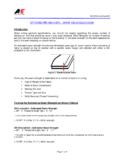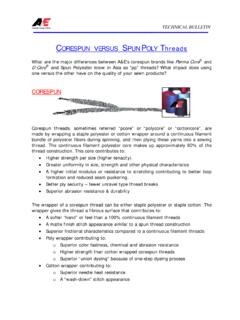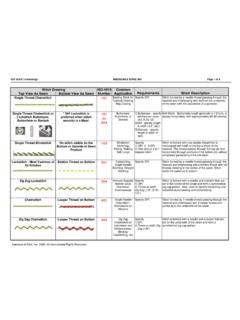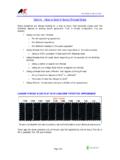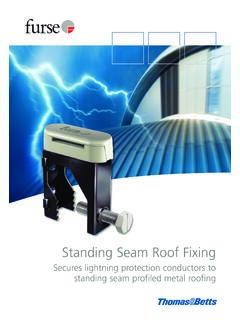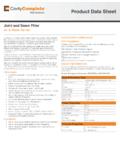Transcription of Minimizing Seam Slippage 2-12-10 - American & Efird
1 TECHNICAL BULLETIN Page 1 of 2 Minimizing Seam Slippage There are two major types of Seam Slippage : 1) When stress is applied to a seam, the yarns in the fabric slip out of the stitching causing an open seam; and 2) When stress is applied to a seam, the yarns in the fabric shift of slide in the weave construction causing seam grinning and fabric distortion. We will refer to the first type as seam Slippage and the second as yarn Slippage . HOW TO MINIMIZE SEAM Slippage Below are actions that can be taken for Minimizing the problem of the yarns in the fabric slipping out of the seam. Use a wider seam margin o If your current margin is 1/4", change to 1/2" Use a different stitch and seam construction o If the seam is currently being sewn with a single needle lockstitch machine, change to: 516 Safetystitch two rows of stitch 514 Two Needle Overedge o If the seam is currently a superimposed seam with on ply on top of the other with a specific margin, change to: Use LSq* Seam where an additional row of stitch is used to cord or topstitch the seam.
2 Use a SSae* french felled seam Experiment with the number of Stitches Per Inch to see what provides the optimum seam performance for the fabric and weave being sewn. o If you are currently sewing the seam at 10 SPI, try going to 12 or 14 spi. o If you are sewing with 18 spi, try going to 12 to 14 spi. * Seam drawings are found on our website at under the Technical Solutions Tab. TECHNICAL BULLETIN Page 2 of 2 HOW TO MINIMIZE YARN Slippage Below are actions that can be taken for Minimizing the problem of the yarn Slippage along the stitch-line. It is our experience that this is normally much worse in seams sewn parallel with the warp, than with seams sew perpendicular to the warp. Use a different stitch and seam construction o If the seam is currently being sewn with a single needle lockstitch machine, change to: 516 Safetystitch two rows of stitch 514 Two Needle Overedge o If the seam is currently a superimposed seam with on ply on top of the other with a specific margin, change to: Use LSq* Seam where an additional row of stitch is used to cord or topstitch the seam.
3 Use SSae* french felled seam Seam drawings are found on our website at under the Technical Solutions Tab. Experiment with the number of Stitches Per Inch to see what provides the optimum seam performance for the fabric and weave being sewn. o If you are currently sewing the seam at 10 SPI, try going to 12 or 14 spi. o If you are sewing with 18 spi, try going to 12 to 14 spi. Experiment with using the smallest and strongest thread possible o Use a Tex16 or Tex18 Perma Core the smallest needle size possible (M60 /Sz. 8). Make sure the stitch is properly balanced with the minimum thread tensions. Use a fusible tape along the seam-line on seams that exhibit worse signs of this problem. Contact your fabric manufacturer for assistance. If you need any additional assistance, please contact your local A&E Sales or GRS representative.
4




